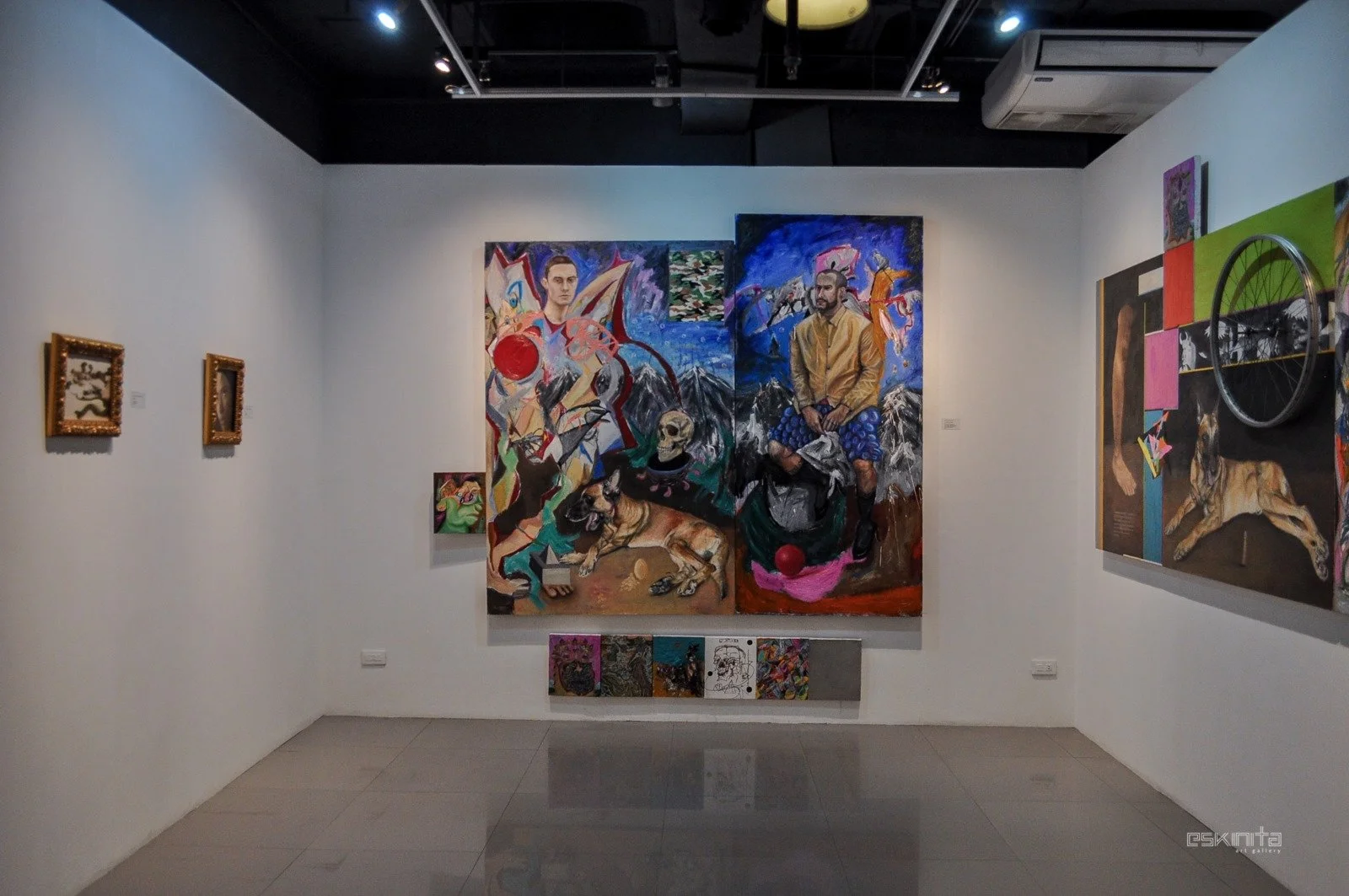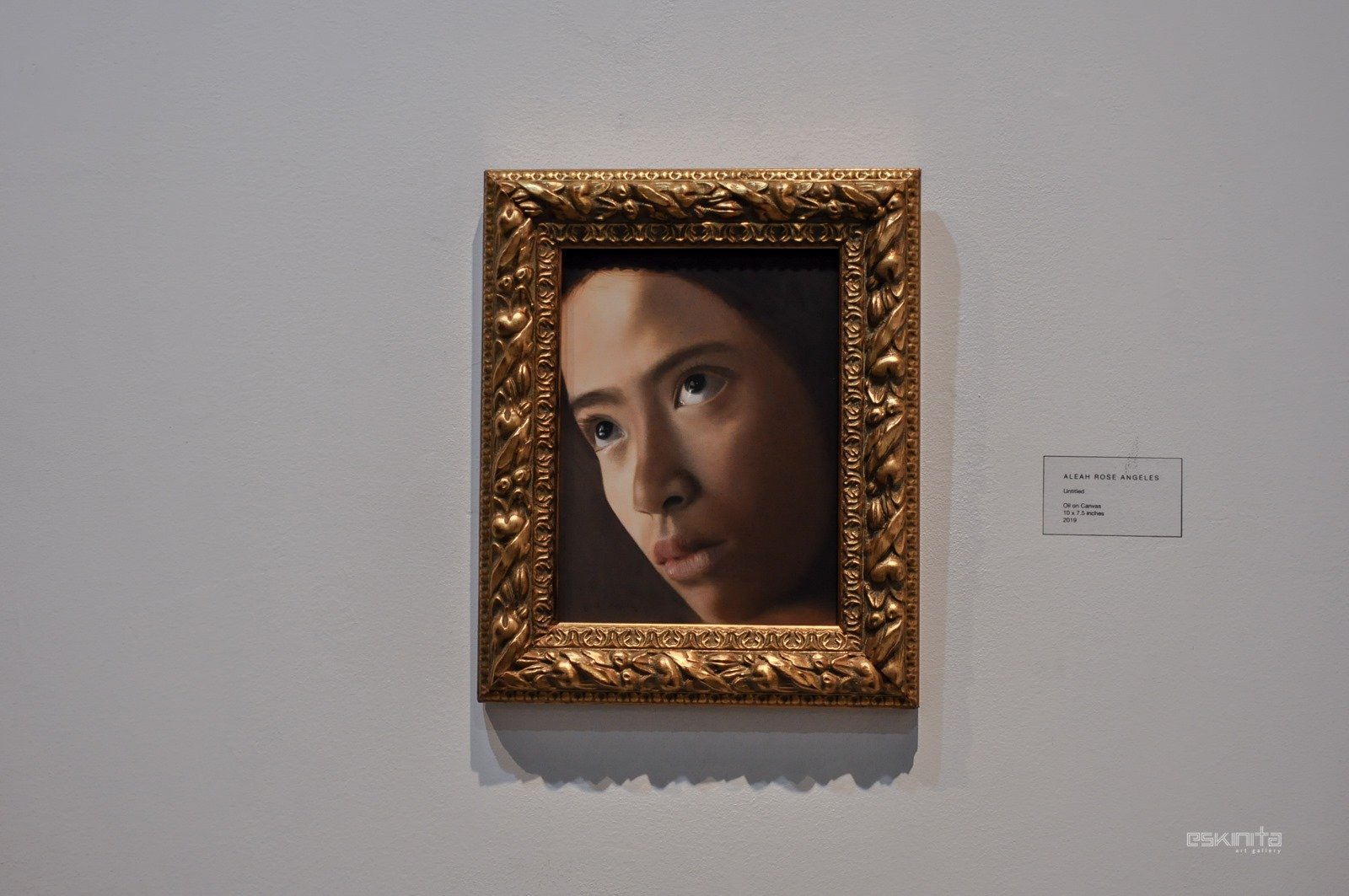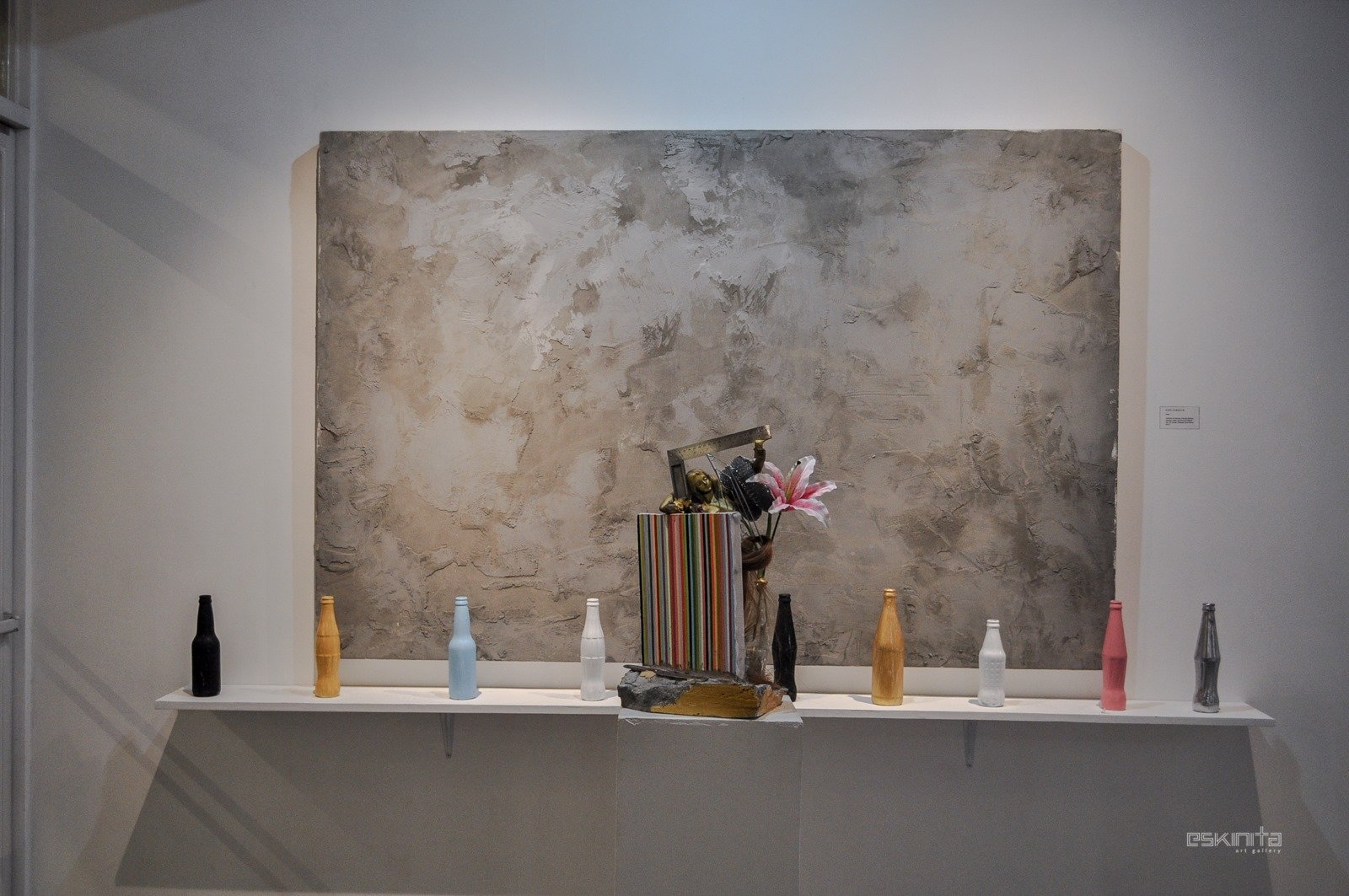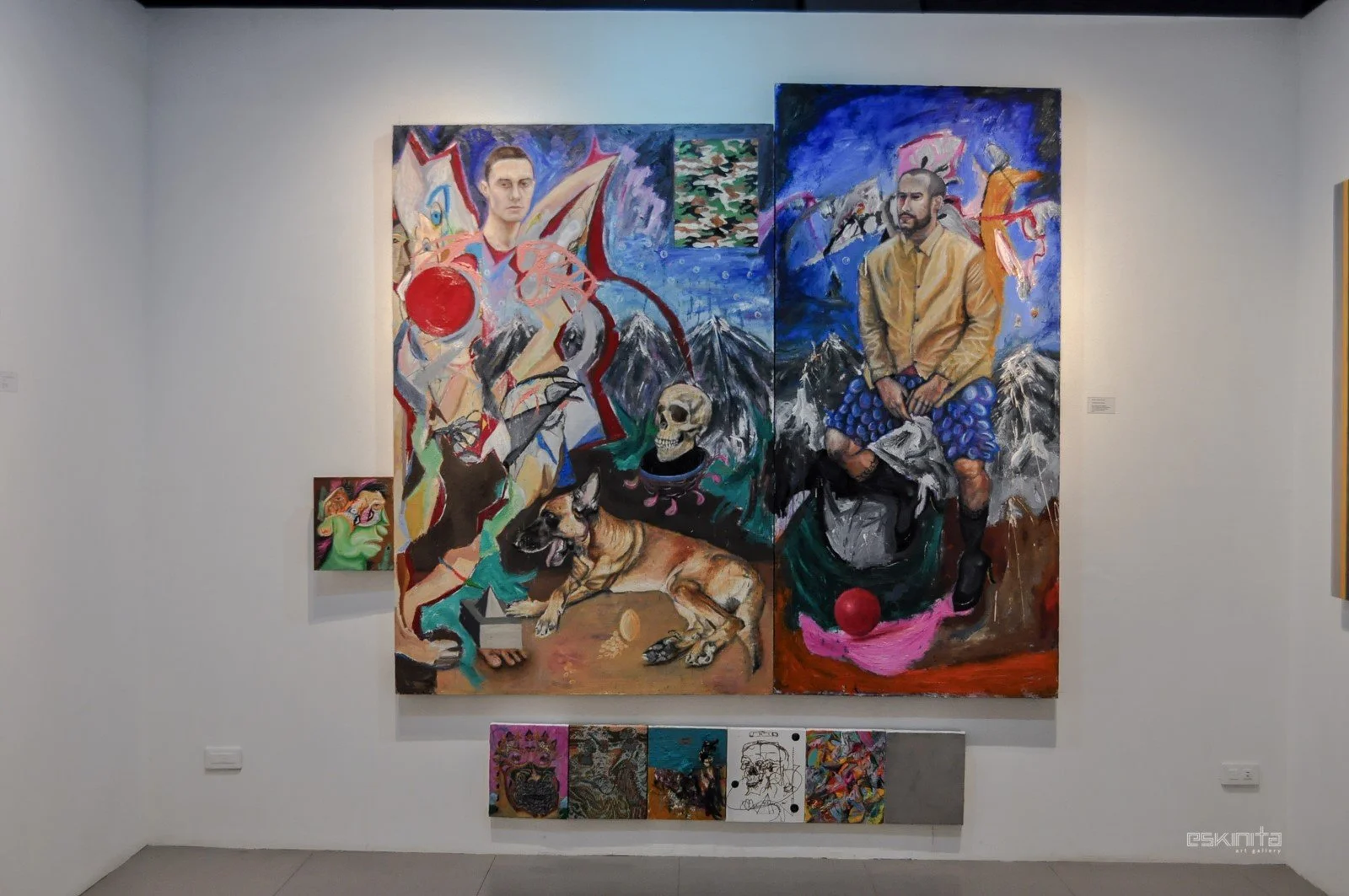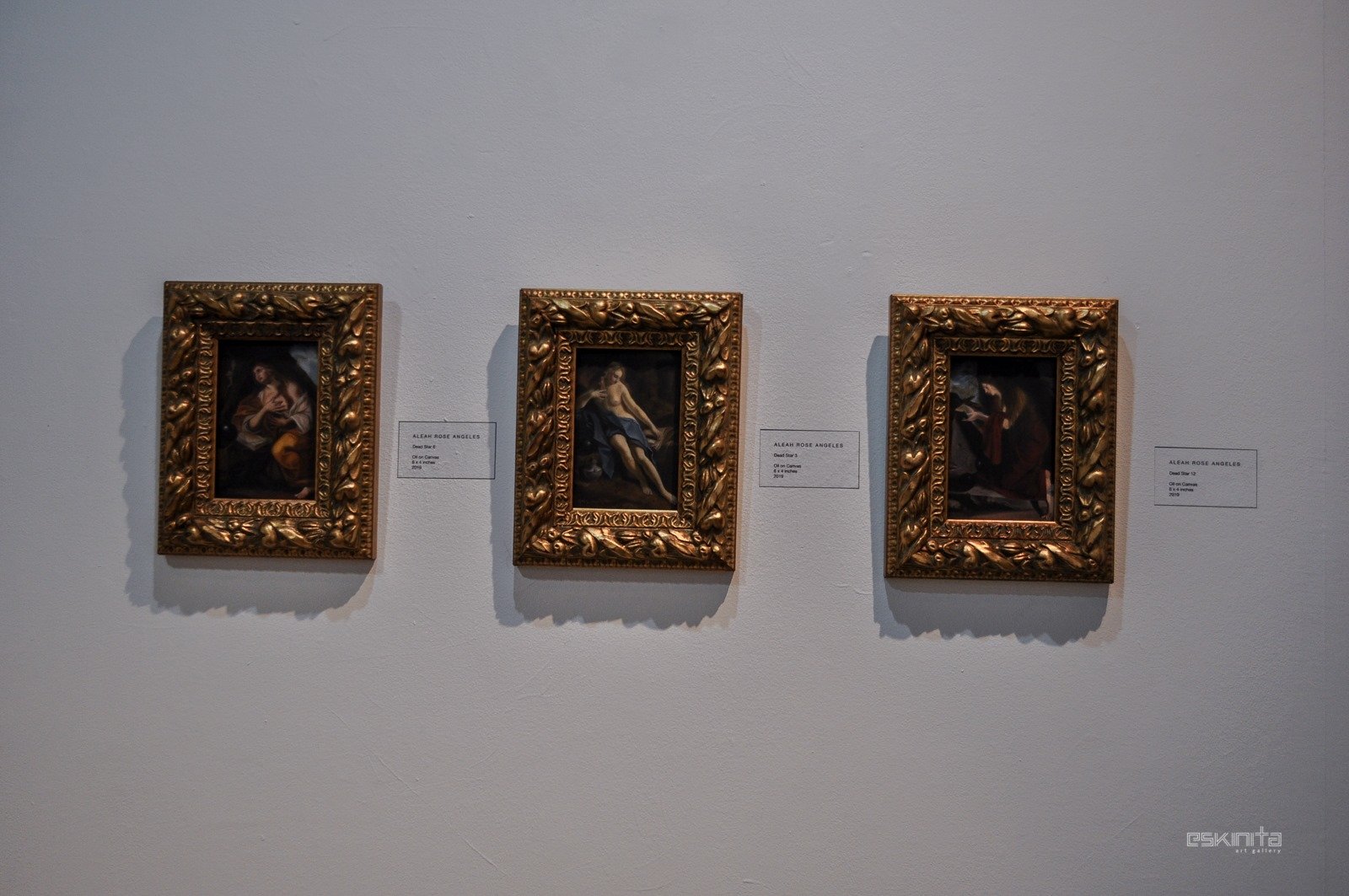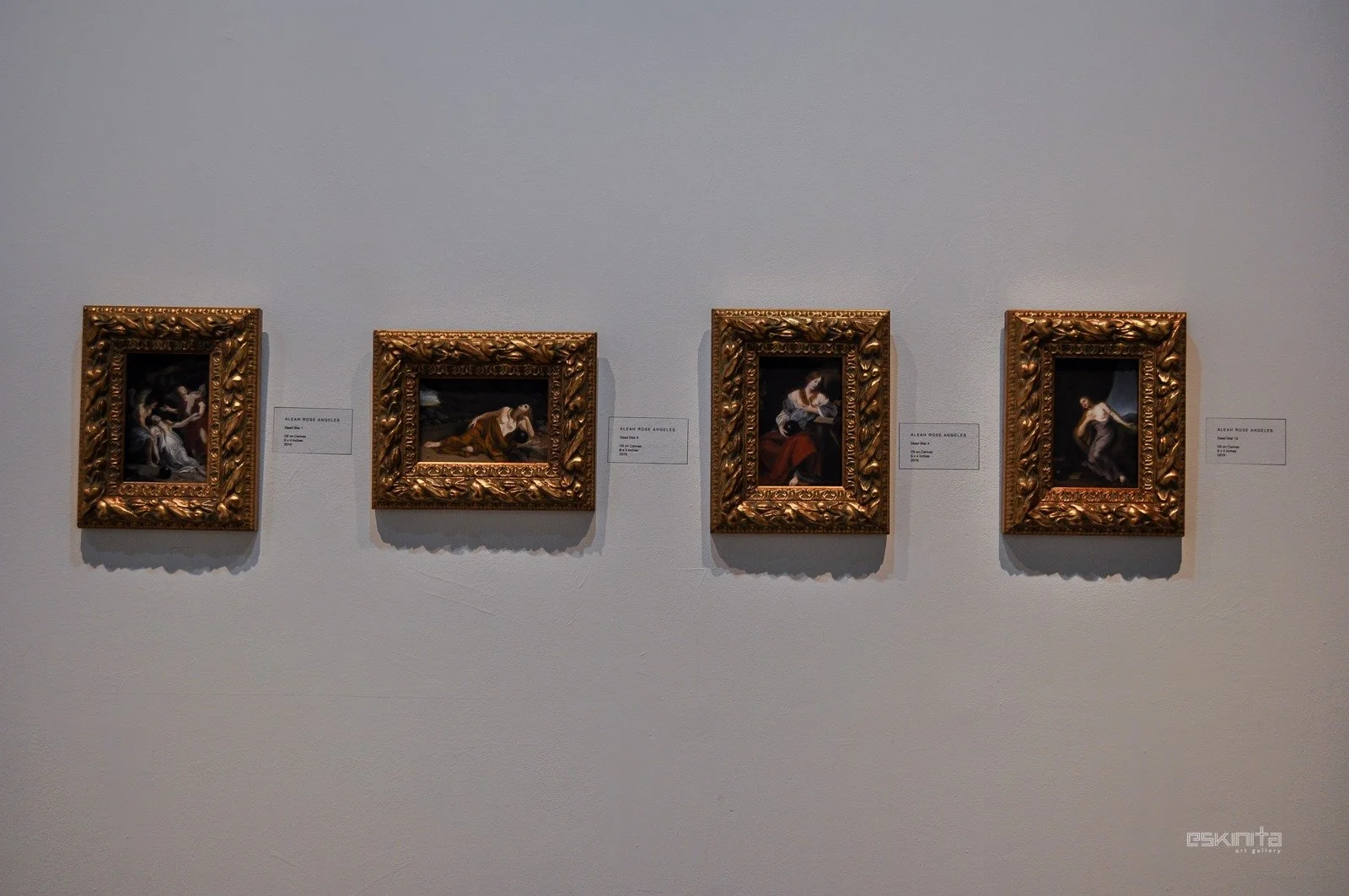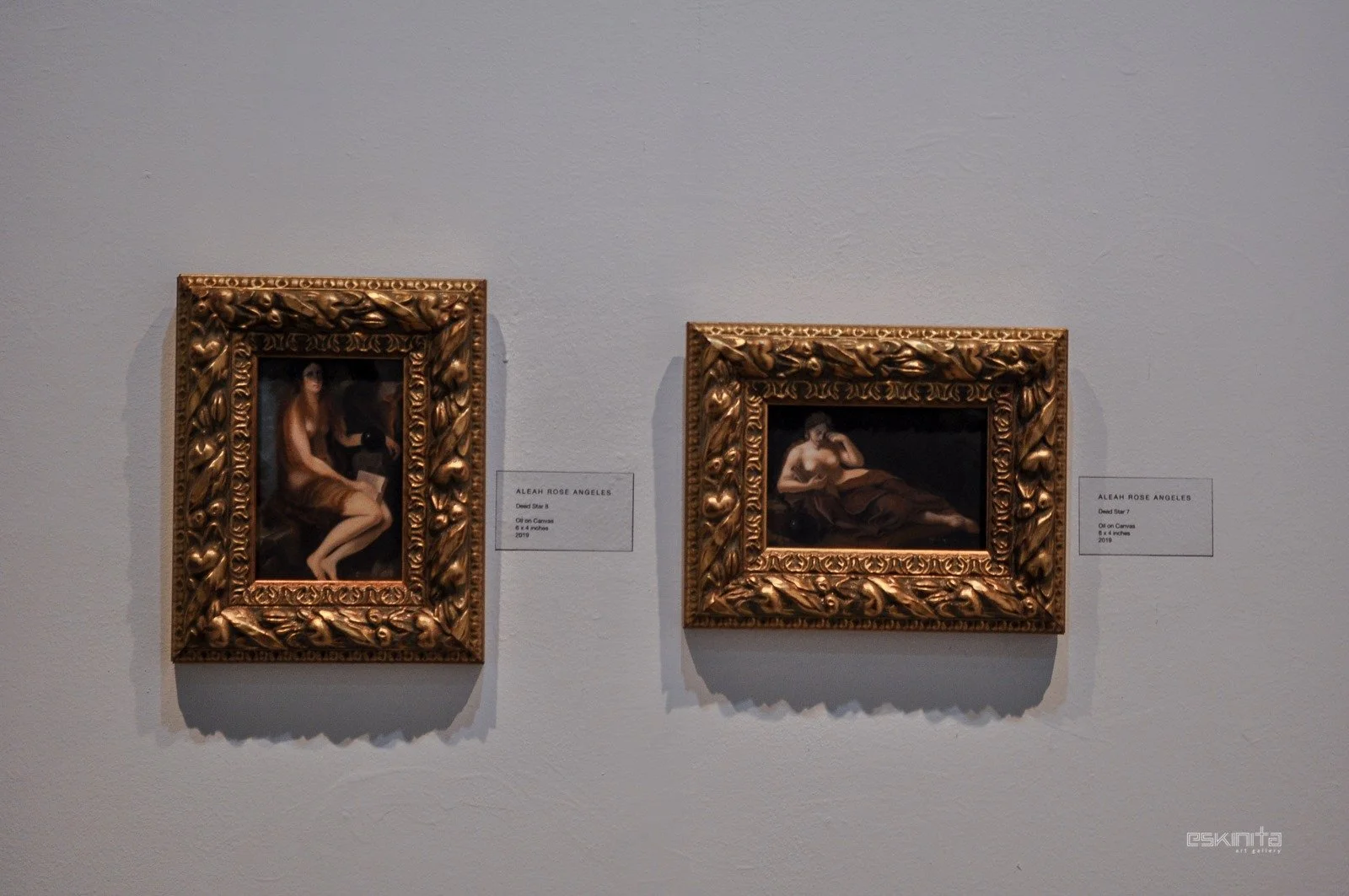
RED Red BlAck red
Nino Cubacub/ Aleah Rose Angeles
May 21 to June 11, 2019
Drawn from classical paintings of Mary Magdalene and St. Rose, Angeles creates narratives that combine ideas of existence with that of an apocalypse. In her works, the religious icons are often painted wearing a hint of red in their clothing, which could also be interpreted as being blessed with the Holy Spirit as symbolized by how the color red is associated with fire in western cultures. Many of the references used by Angeles are paintings illustrating these two venerable women with skulls--- a clear suggestion of death. In her works, Angeles intervened by changing the form of a skull to a black sphere in an attempt to depict a dead star or a black hole; an ominous apocalypse waiting even among the most divine of us. Perhaps, to say that in the end, everything returns to dust.
Meanwhile, the works of Niño Cubacub take a hundred eighty degree turn in navigating through ideas of existence. Here, Cubacub extracts what he can from the works of masters of Modern Art such as Pablo Picasso, Wassily Kandinsky, and even Édouard Manet. Through paintings, assemblages, and installations, Cubacub inserts his ideas of the living among the images created by the artists proclaimed as geniuses in the field of art. Combining different visual elements in his works, Cubacub questions the life that existed among the works of these artists and the lives of the artist themselves: What kind of routine was involved in the creation of a master? How can it be adapted to make someone a master? Can a master be made?
More than giving meanings and ideas hinged on red and black as colors, “RED Red BLAck red”, looks truthfully at the likeness of life visually interpreted and translated in unexpected images. Perhaps, like the works of the two artists in this exhibition, the necessity to understand about our existence does not always have to be connected to an idea or a reality. It could be from many points of view, breaking conventions and procedures along the way.
-Gwen Bautista
